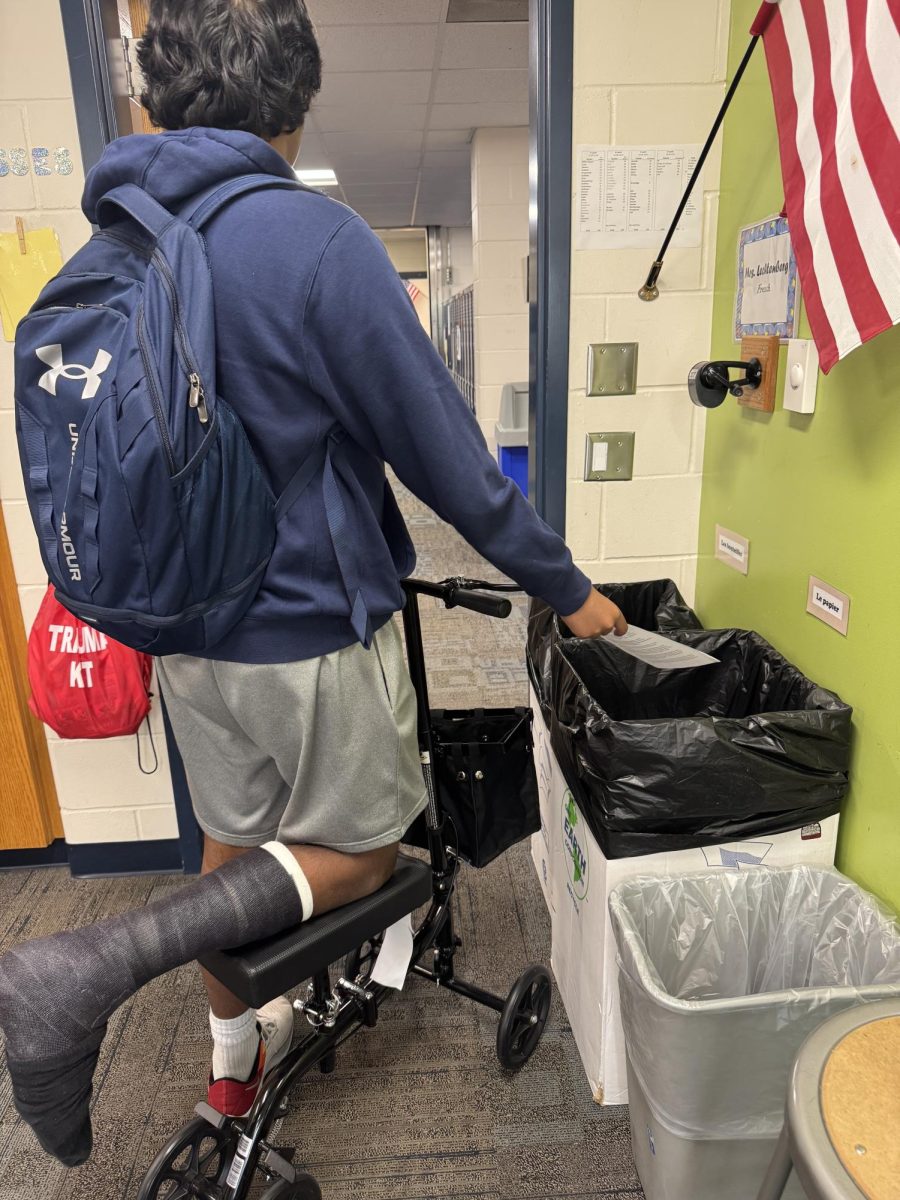In the discussion of large-scale pollution, industries such as energy production, agriculture and transportation are the first to be brought up, but a big contributor is often overlooked: schools.
Each day at school, numerous tests are taken, countless worksheets are completed and hundreds of students eat plastic-wrapped meals throughout the day. The US Department of Energy reported that schools spend $8 billion on energy and emit 72 million metric tons of carbon dioxide per year. This is the average carbon footprint for schools throughout America, but how sustainable is PV?
One facet where PV shines is the usage of online learning systems like Google Classroom. These platforms eliminate the need for physical handouts, drastically cutting down on paper usage, but the district can still do better. Expanding the use of digital learning to include tests and textbooks can help minimize the environmental impact of learning.
Environmental science teacher Zachary Marotta is optimistic of PV’s sustainability efforts. “One thing that our school is doing well in terms of environmental sustainability is managing our electrical usage. This can be seen in the types of light bulbs our school uses, to motion directors to turn on lights in the classrooms, stairwells, and hallways,” Marotta said. Additionally, our district gets their energy from MidAmerica. This company is investing in renewable energy production, with a goal of reaching zero net emissions by 2050.
The efforts our school is taking is excellent, but there is still much work to be done in other areas.
Food waste management is another area that can use improvement. Every day at schools, students dispose of large amounts of food, which ends up in landfills.
Mount View School district, a school in Maryland, saw this as an opportunity. This high school was able to create a “robust composting program,” which helped them turn 650 pounds of food waste into compost. PV could follow the footsteps of this school and cut down food waste by composting.
It is clear that PV has some work to do, but students are taking initiatives to make the high school more sustainable. Environmental Club, led by senior Ayah Alsheikha, aims to educate students on sustainability. “PV Environmental club is a space for students to not only learn about many key problems with the US’ waste habits but those within the PV district itself. PV has a responsibility to recycle the huge amounts of waste that cycle through the school, but at the high school, this responsibility is undermined and neglected. We aim to educate our student body about these issues to teach how to recycle on their own,” Alsheikha said.
Addressing the sustainability of schools does more than just reduce waste; it sets the bar for future generations. While the district has made progress by employing online learning systems, there is still more work to do with food waste and sustainability awarness. As climate change continues to become an increasingly pressing issue, PV can create environmentally conscious students. The integration of sustainable practices into the daily routine shows that everyone can play a part in the fight against global warming. With schools at the forefront in the fight against climate change, students will form habits that will be with them for the rest of their lives ー leading to a more sustainable future.










Arslonbek • Oct 23, 2024 at 9:15 am
One of the best ways you can take a step toward making your school greener is by using green cleaning products. These products are free of harmful chemicals.
Porter roach • Oct 20, 2024 at 9:22 pm
I wonder if this will actually lead to any real change